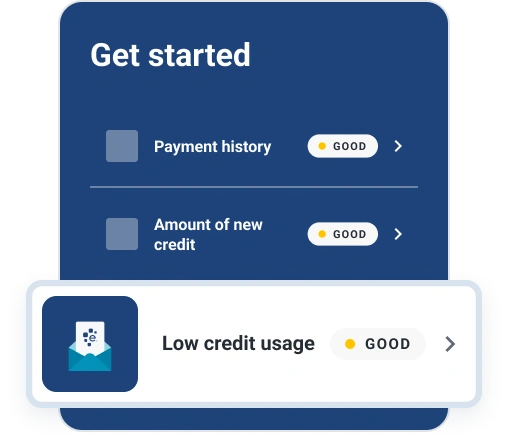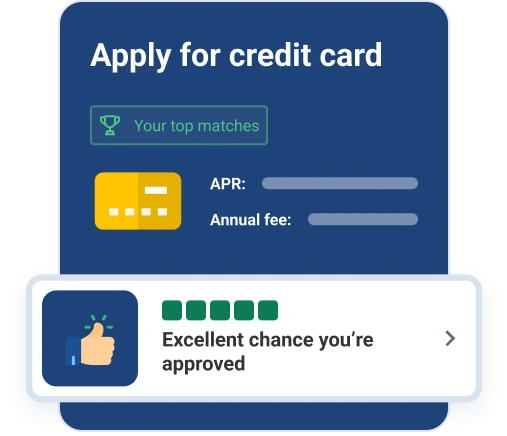At Experian, one of our priorities is consumer credit and finance education. This post may contain links and references to one or more of our partners, but we provide an objective view to help you make the best decisions. For more information, see our Editorial Policy.
In this article:
If you're like most people, you get a lot of credit card offers in the mail—and probably shred most of them without a second glance. But seeing "0% APR" emblazoned on the envelope might pique your interest. What is a 0% APR (annual percentage rate) credit card and how can it help you? This type of card lets you make purchases, balance transfers or both for a specified time period without accruing any interest on your balance.
Here's what you need to know about 0% APR credit card offers before you apply.
Know That 0% APR Is Temporary
Whether the 0% APR is a promotional offer for balance transfers, new purchases or both, it's important to know that it only lasts for a limited time. By law, the 0% APR must stay in effect for at least six months, unless you are more than 60 days late on a payment. But you can find 0% APR offers that last 12 months, 18 months or even longer.
Save with 0% intro APR credit cards
There are two types of promotional financing offers, and it's important to understand the difference between them. The most common type is the true 0% APR offer available on many credit cards when you open a new account. With this type of offer, no interest charges accrue on new purchases, balance transfers or both during the promotional financing period. The standard interest rate will only begin to apply to your remaining balance once the promotional rate ends.
A less common type of promotional offer is deferred interest financing. Retailers may offer deferred interest financing to help customers finance large purchases such as furniture, electronics and appliances. Deferred interest financing is often advertised as "same as cash" if paid within the promotional financing period.
On the surface, deferred interest financing may look just like 0% APR financing, but there's one important difference. With deferred interest financing, interest begins accruing on your charges starting on the purchase date and is waived only if you pay the entire balance before the promotional financing period ends. If you pay just a day late, or your payment is a few dollars short, you'll have to pay all of the interest charges that have accrued since the date of purchase.
In contrast, true 0% APR financing doesn't charge interest until the promotional period expires, and then only on your remaining balance at that time. Before making a purchase using a retailer's credit card with deferred interest financing, make sure you clearly understand the terms of the agreement. Otherwise, you could be hit with a hefty interest charge when the promotional period ends.
When the Offer Expires, You Will Have a Regular APR
All good things must come to an end, and introductory 0% APRs are no exception. When your promotional offer period expires, your credit card will begin charging a standard APR. You can find this APR in the credit card terms you receive when your application is approved. Make sure you know when the new APR kicks in and what it will be. Also keep in mind that even during the promotional period, some transactions—such as cash advances—may accrue interest. This is explained in your credit card terms; read them and be sure you understand exactly how much interest you'll be charged for each type of transaction.
0% APR Is Often Used for Balance Transfers
Although many cards offer 0% APR financing on new purchases, the most common type of 0% APR offer is for balance transfers. This allows you to transfer your balance from a high interest credit card to the new 0% APR credit card and avoid accruing any more interest on the amount transferred for the life of the promotional offer.
Interest-free financing on balance transfers works much like it does for new purchases, with one big difference: You'll usually have to pay a balance transfer fee, which is generally 3% to 5% of the amount transferred. This fee is added to the balance transferred and it, too, will be subject to interest charges if you don't pay it off before the promotional financing period ends.
Here's how the balance transfer process works. Once you're approved for the new 0% APR credit card, the card issuer will inform you of your credit limit and the maximum balance you can transfer. When the transfer is approved, the new card issuer will either pay the original credit card issuer directly or send you a check you can use to do so. This process typically takes several weeks, so keep making payments on the original credit card until you know the balance has been transferred. Otherwise, you could miss a payment, which can hurt your credit score.
When looking for 0% APR balance transfer offers, keep in mind that these offers are designed to get you to move existing balances from another card issuer. In most cases, you can't transfer a balance between two cards issued by the same company.
The best way to use 0% APR credit card offers is to transfer a large balance to the new card and then steadily pay it off before the promotional period ends and interest starts to accrue. To ensure you pay it off in time, divide the total balance on the card by the number of months your introductory 0% APR offer lasts. For instance, if you transfer a $12,000 balance to a card with an 18-month 0% APR on balance transfers and pay a 5% fee, your balance on the new card will be $12,600. Commit to paying $700 a month ($12,600 divided by 18 months) toward this card, and you'll pay off the balance before interest kicks in. Depending on the card, you may even be able to set up automatic payments so you never miss a due date.
Of course, a balance transfer isn't your only option for reducing high interest credit card debt. Read about some other ways to pay off credit card debt.
0% APR Doesn't Always Apply
Keep in mind that the 0% APR doesn't apply to every type of transaction. It will only apply to certain transactions, specified in the details of your credit card terms. In most cases, 0% APR will apply to new purchases and balance transfers, but sometimes it's only one or the other.
For example, if a credit card offers 0% APR financing on new purchases only, you'll receive that interest rate on purchases made during the promotional financing period. If you transfer a balance from another card to your new card, however, that balance will accrue interest at the new card's normal interest rate. And if you use your new credit card to get cash at an ATM, you'll create a separate cash advance balance, which will have its own interest rate. Before using your new credit card, be sure you understand how much interest each type of transaction will incur.
You Still Need to Make Minimum Payments With 0% APR
Just because you have a promotional 0% APR offer doesn't mean you can rack up purchases without paying your monthly bill. Even during the 0% APR introductory period, you'll still need to make a minimum monthly payment on your card. If you don't make at least the minimum payment, you may lose your 0% promotional offer. The credit card issuer may also impose a penalty interest rate going forward that's higher than your standard interest rate would have been.
When you make the minimum payment, it will only be applied to the balance with the lowest interest rate, such as purchases you made at the 0% introductory APR. If you make a payment that's bigger than the minimum amount, however, the additional funds will be applied to the balance with the highest interest rate. That could be a balance transfer or a cash advance, not necessarily the transactions made with the promotional APR.
You Need Good to Excellent Credit to Get 0% APR
As you might expect, getting approved for 0% APR credit card offers requires good to excellent credit. Applying for any new credit card will result in a hard inquiry to your credit report, which can negatively affect your credit report for a short time. To minimize the number of hard inquiries at one time, do your homework and find a 0% APR credit card that you can get preapproved for.
Start the process by getting your checking your credit scores so you can identify the best promotional credit card offers available to you. If you discover your credit score is lower than you expected, get a free copy of your Experian credit report to see if there are any mistakes that need to be corrected.
Use 0% APR Credit Cards Wisely
Whether you're trying to pay down high interest credit card debt or simply want to make purchases on credit without paying interest, a credit card with a 0% APR introductory offer can be a valuable tool for reducing expenses. To get the most from the card, make sure you understand the card's terms, choose the right offer for your goals, and pay off your card balance before the promotional period ends. By choosing the right credit card and using it wisely, your bank account and your credit score both can benefit.




